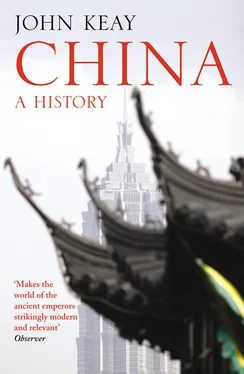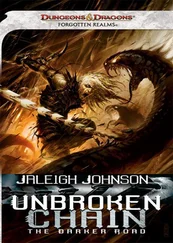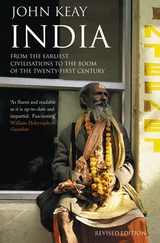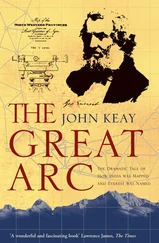The tomb is that of King Wen, the second in the Nanyue succession and not to be confused with his contemporary Han Wendi, the emperor in Chang’an. In accordance with his rank, Nanyue’s King Wen was buried in a jade suit; it did nothing for the preservation of his corpse, although his many-chambered tomb is interesting. It represents in miniature the layout of his palace, with public rooms to the fore (banqueting hall in the east wing, treasure store in the west wing) and private apartments to the rear (including a chamber for those servants who accompanied him in death and another for concubines similarly ‘honoured’). Both Han and native Yue productions figure among the furnishings, along with African ivory, frankincense from southern Arabia and a circular silver bowl with lid that could be Persian. Then as now, the wealth of Panyu/Guangzhou stemmed from its Pearl River frontage on the South China Sea. Backed by the Nanling mountains, Nanyue seemed to have eluded Han ambitions and to be enjoying the perks of its balmy climate spiced with whatever foreign fancies came its way.
The Yue people are thought to have been Malayo-Polynesian rather than Mongoloid like the Xia Chinese. In northern China they were invariably deplored for their alien customs (e.g. banana leaves for plates) as much as for their steamy hillsides and malarial swamps. When the First Emperor extended his sway into the region, it was not a popular destination; only ‘fugitives, reprobates and shopkeepers’ were sent to settle there. Qin’s short-lived administration had been skeletal, and when the emperor died, it broke away. A Qin official, taking his cue from the melancholy Chen She’s uprising, had declared Nanyue an independent kingdom and himself its first king.
This was Zhao Tuo, otherwise King Wu of Nanyue. For ten years he was left in peace, Han Gaozu ‘having enough to do to take care of internal troubles’, according to Sima Qian. But in 196 BC the Han emperor sent a trusty troubleshooter, the Confucian ideologue Lu Jia, to talk King Wu into acknowledging Han supremacy. The king obliged in return for recognition of his assumed title, then reneged over a trade dispute. A Han embargo on iron sales, a strategic commodity since it was used for weapons, brought protests, followed by recrimination: King Wu declared himself an emperor, and troops sent south in 183 BC by the Dowager Empress Lü failed to quash this presumption. On the contrary, Nanyue’s troops began overrunning neighbouring territories. Their sovereign now rode in a carriage with a yellow canopy and issued his own ‘edicts’, both of these being imperial prerogatives. 17
Sima Qian has Nanyue’s first king (and self-made emperor) dying in 137 BC. This seems unlikely; for if, as he says, King Wu was a magistrate under the First Emperor, he would have been at least a hundred and have outlasted two Qin and six Han emperors. More plausibly it was his successor, he whose jade suit now lies in the Guangzhou museum, who received the troubleshooting Lu Jia a second time and undertook to renounce the imperial style and send tribute to Chang’an. This was during Han Wendi’s reign and should have ended the matter; but unlike Qin’s incorporation of the Chinese ‘Midwest’ in Sichuan, the Han incorporation of its ‘Deep South’ dragged on.
Two more kings of Nanyue occupied the throne in Panyu before trouble broke out again. By then, from Chang’an the mighty Han Wudi, son and successor of Jingdi, was transforming Han’s patchwork dominion into a dynamic east-Asian empire. The much-fragmented ‘feudal’ kingdoms had been reduced to impotence and obliged to accept imperial appointees as their chancellors, or prime ministers. This innovation went down badly in Nanyue when it was introduced in 113 BC. No Nanyue king had as yet actually visited Chang’an to offer tribute; and when a pro-Han faction in Panyu persuaded the young king to do so, the country rose in revolt under its existing chancellor. Han envoys and supporters were massacred, an avenging force from Chang’an repelled.
The Han empire, which had just opened a grand salient into central Asia, was being humbled by ‘barbarians’ at its back door. Han Wudi could no longer trifle with the situation, and suasion having failed, only force remained. In 112 BC no less than four expeditions converged on Panyu by river and sea. The ‘General of the Towered Ships’ at the head of 20,000–30,000 men got there first. Joined by the ‘General Who Calms the Waves’, he stormed Panyu at night and, come dawn, the city surrendered. ‘Thus five generations, or ninety-three years after Zhao Tuo first became king of Southern Yue, the state was destroyed.’ 18Sima Qian, then at work on his Shiji , felt nothing but satisfaction. There would be no more kings of Southern Yue, nor of Eastern Yue (in Fujian), which suffered a similar fate the following year. By the end of 111 BC all of mainland southern China plus the island of Hainan and the Red River valley of northern Vietnam were finally incorporated into the empire.
Конец ознакомительного фрагмента.
Текст предоставлен ООО «ЛитРес».
Прочитайте эту книгу целиком, купив полную легальную версию на ЛитРес.
Безопасно оплатить книгу можно банковской картой Visa, MasterCard, Maestro, со счета мобильного телефона, с платежного терминала, в салоне МТС или Связной, через PayPal, WebMoney, Яндекс.Деньги, QIWI Кошелек, бонусными картами или другим удобным Вам способом.












